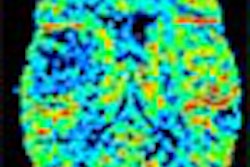SAN FRANCISCO - For doctors who treat breast cancer, a new study brings troubling, if nebulous, implications. Researchers at Duke University found that the decision to treat with mastectomy rather than breast conserving therapy may be more closely associated with referral patterns than with clinical factors.
In a presentation Monday at the American Society for Therapeutic Radiology and Oncology (ASTRO) conference, Dr. Carole Hahn from Duke University Medical Center in Durham, NC, discussed her group's study of 586 patients who had undergone breast cancer surgery at a community hospital in North Carolina. The study evaluated the rate of breast conserving therapy (BCT) vs. mastectomy before and after the opening of a breast radiotherapy unit on-site in 1996.
Not only is BCT considered the preferred treatment compared to mastectomy, Hahn said, most breast cancer patients are eligible for it.
"The published data indicate that only about 20% of patients would be medically noncandiates for BCT, we have [significant] data showing BCT equivalency to mastectomy in terms of breast cancer curability, and cosmetic outcome is generally good to excellent," she said.
Thus, BCT rates vary based on geography, physician and patient biases, age, and possibly socioeconimic factors rather than clinical indications, she said. U.S. data on BCT show "high rates in the Northeast and Pacific Coast, with lower rates in the Midwest and the lowest rates in the South," where fewer than one-third of breast cancer surgery patients are able to avoid the disfigurement and emotional trauma associated with mastectomy, she said.
The goal of the study was to evaluate the impact of opening a radiotherapy clinic inside a community hospital on the BCT rates within the hospital. Before opening the clinic in 1996, the nearest radiotherapy unit was at a tertiary care center five miles away.
The group reviewed the hospital's pathology base to identify patients who had undergone breast surgery between 1994 and 1995, and those who underwent surgery between 1997 and 1998, after the radiotherapy unit had been opened. The rates for BCT vs. mastectomy were compared using univariate and multivariate logistical regression analysis.
In all, 586 patients had initial and definitive breast cancer surgery performed at the community hospital. Data from 1994-1995 -- before the on-site radiotherapy clinic opened -- show that of 282 breast cancer patients diagnosed and treated, mastectomy was performed on 201of 286 patients (71.3%) vs. 81 patients (28.7%) treated with BCT.
Data from 1997-1998 -- after the on-site radiotherapy clinic opened -- show that of 304 invasive and preinvasive breast cancers diagnosed and treated, mastectomy was performed on 171 patients (56.3%) vs. 133 patients (43.7%) who received BCT. The era of treatment -- 1994-1995 vs. 1997-1998 -- had a significant effect on the treatment method in both univariate and multivariate logistic regression analysis, Hahn said.
"We looked also at invasive vs. preinvasive cancers, and ... nearly all the difference was residing in invasive malignancies," she said. "The overall breast conservation rates for the invasive cancers went from 21% up to 44%, which was significant at least on univariate analysis. DCIS rates did not appreciably change."
There was no significant difference in the age of the patients. Mean patient age was 59.2 years in 1994-1995 and 60.7 years in 1979-1998. Moreover, the same breast surgeons were on staff during the two eras, and the radiation oncologists in 1997-1998 were the same ones who worked at the tertiary care center five miles away in 1994-1995, Hahn said.
"We demonstrated that there was increased utilization of breast conservation between the two study eras. There were no changes in demographics; there were no changes in staff on either the radiation therapy side, or on the surgical side. Therefore we conclude that the difference was due to [the addition of] an on-site radiotherapy unit, and the more active presence of radiation oncologists at the community hospital."
While the precise reasons for the changes are unclear, Hahn said, moving the radiation therapy center on-site had a far greater impact than had been expected. Five miles doesn't seem like a significant barrier, so the key may be the presence of radiation therapy staff at the same site where the diagnosis and treatment decisions are made.
Of course, it could be that the doctors' referral patterns simply changed as they became more aware of BCT. The study is being expanded to look at individual referral decisions, Hahn said.
"It wasn't the five miles" separating the two centers, an audience member commented, "It's having the radiation oncologist available [on-site] rather than at the other end of a voicemail message." It is incumbent on all clinicians to examine their own referral patterns to ensure that treatment decisions are based on what's best for the patient, he said.
By Eric BarnesAuntMinnie.com staff writer
November 6, 2001
Related Reading
Breast MRI leads to necessary tumor detection, not unnecessary mastectomy, December 4, 2000
Use of breast-conserving cancer therapy varies significantly by surgeon, November 27, 2000
Very elderly women in US often not offered full range of breast cancer treatments, August 1, 2000
Copyright © 2001AuntMinnie.com



















